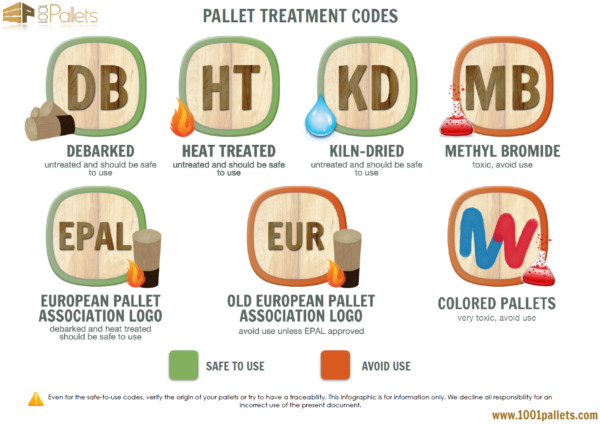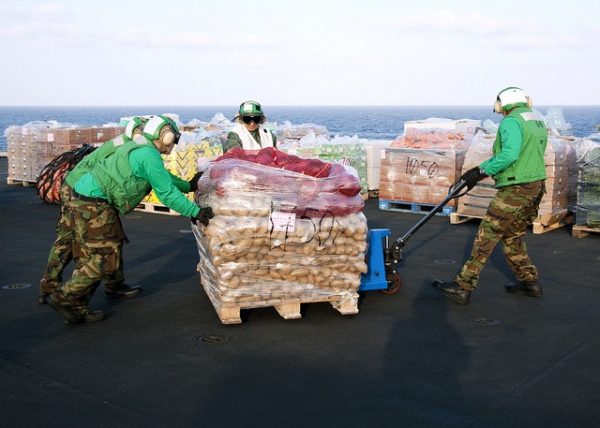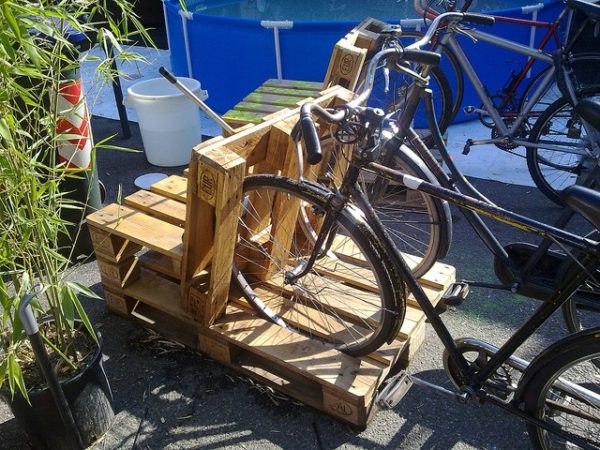Is Pallet Wood Safe For Garden
On the surface, the ubiquitous pallet seems ideal for reuse projects: It's wood, it's free, and by reusing it, you keep it out of the waste stream. How can you go wrong? We've even featured a beginner's guide for upcycling pallets into attractive home décor.
But it turns out that pallet wood can often be contaminated with toxic chemicals, harmful bacteria, and other icky bad stuff you certainly don't want in your home or around your family.

"You have to consider where [the pallet] came from, what's been shipped on it, and what you're going to use it for," explains Candice Miller, a horticulture educator and expert from the University of Illinois Extension.
"I think a lot of people see these cool ideas on the internet and on Pinterest, and they go for it. They really don't think about what it's been treated with, where it's been, or if it's really safe to use."
We know, it's a bit of a downer to suggest that all pallet reuse is a bad idea. So, before reusing a pallet at home, read on for some questions to consider to protect your health.
How Was It Treated?
To prevent the spread of invasive pests and pathogens, the USDA requires manufacturers to treat pallets and other wood packaging before it can enter or transit the United States.
Pallets are either heat-treated (heated to a high temperature in kilns to seal the wood) or treated with methyl bromide — a toxic pesticide that has been linked to human health problems and ozone layer depletion.

The use of methyl bromide has been significantly restricted in recent years due to these health concerns, but Miller points out that it's difficult to tell how old a pallet is or how long it has been in use.
Look for the IPPC stamp on the side of the wood to determine how it was treated. Pallets marked with an "HT" were heat-treated and did not come into contact with chemicals during the treating process. Avoid unmarked pallets or those stamped with an "MB" for methyl bromide.

How Was It Used?
"The other concern is what's actually been on that pallet," Miller explains. "Was there food shipped on it where you could get bacteria and various things soaking into the wood? Were there chemicals shipped on it?"
Following the 2010 recall of E. coli-tainted romaine lettuce, the National Consumers League conducted exploratory tests on pallets to see if they could be potential carriers of harmful bacteria.
Ten percent of the pallets tested had E. coli present, while 2.9 percent tested positive for Listeria — a highly aggressive foodborne pathogen.
Pallets can also be exposed to less-than-sanitary conditions on loading docks, shipping barges, or trucks, and they may also be used to ship chemicals or other toxic materials. So, it's not hard to see why using caution when sourcing pallets becomes critical.

Can't You Just Clean It?
You may have read an article or two online that advises cleaning used pallets with hot soapy water, vinegar, or a bleach solution to vanquish bacteria and other contaminants, but Miller warns that these methods aren't always effective.
"Wood is very porous, and you're really never sure if you've gotten everything out of there," she tells Earth911. "The same thing with sealing or painting it. I don't think the effectiveness of that has been totally proven yet, either."
To avoid coming in contact with contaminated wood, be sure you can confirm the origin and use of a pallet before repurposing it at home. Pallets used locally for innocuous materials such as textiles or paper products are your best bet, but you still want to make sure these are from a trusted source.
How Will You Use It?
Outdoor uses, such as bike racks and signage, are generally safe applications for pallet wood. But you want to be more careful if you'll be coming in close contact with used pallets, Miller advises.

"If it's something that you're going to sit on or you're going to be coming into contact with or obviously growing food on, that's something that I would be the most concerned about, " she tells Earth911.
To be safe, do not use upcycled pallets indoors unless they came from a trusted source, and avoid growing food on or near used pallet wood. For the health of you, your family, and the planet, never burn pallet wood or treated lumber in your fireplace.
Pallet Sourcing Tips
"Your best bet, although it's obviously not as great for recycling reasons, is to get a new pallet," Miller advises.
Other than buying new, you can also try to develop relationships with businesses in your area to source old pallets that were not used to ship food, chemicals, or other materials that may contaminate the wood.
"It all varies locally," Miller says. "You're probably just going to have to ask around, and ask various businesses what they do with their pallets and find out information that way."

In some cases, you may also be able to source off-cuts from pallet manufacturers in your area. These wood pieces may be slightly warped, cut to the wrong size, or otherwise inappropriate for use in a new pallet — meaning they may go to waste without a new home.
Call around to pallet manufacturers or distributors near you and ask how they dispose of their off-cuts. They may be willing to give them away or sell them at a low cost.
Recycled building materials retailers, such as your local Habitat for Humanity ReStore, are also great sources for low-cost reclaimed wood. Since using these sources greatly reduces health concerns, they may be your best bet if you're concerned about pallet safety.
"I think it's just awareness," Miller says. "It's making people aware that you really do need to think about that wood before you use it. Even though it's a great idea to reuse things, you definitely want to think about it."
Editor's note: Originally published on July 30, 2013, this article was updated in January 2020.
Is Pallet Wood Safe For Garden
Source: https://earth911.com/health/how-to-safely-use-pallet-wood/
Posted by: motleychricand.blogspot.com

0 Response to "Is Pallet Wood Safe For Garden"
Post a Comment